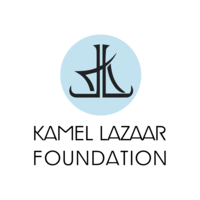In North Africa, the main art practiced by women has traditionally been weaving. In Western Europe this is considered a secondary decorative art or craft. In North African society (as in many other traditional societies), weaving is a highly important primary art.
In traditional societies men and women are segregated. They organize their respective worlds in different spaces and in turn, cultural and artistic expressions reflect this. Gender segregation in such societies is accepted as a necessity and is taken for granted, without question. It is considered as to be an unavoidable, natural – not cultural – phenomenon. The nature of this system is based on two forces, two entities emanating through the cosmos, separated, antagonistic and collaborating at once. Consequently, cultural and artistic expressions differ according to gender.
Tunisian weaving is an astonishingly rich, multifaceted, complex art form. Woven fabrics with geometric patterns are usually used as garments, or for domestic or commercial use. The main flat weaves are the kilim (double-sided, i.e. there is no reverse), the margoum and the hanbel. Among nomads, the main types were the haml and the ousada. My research focuses on women's garments, of which the main types are the bakhnouq, the haik [(Berber : tahaikt), also known as houli or haram], and the 'ajar or ta'jira. The female garment traditionally speaking is a rectangle of a few meters, wrapping around the body fixed by two pins (called abzim in Morocco and Algeria, khleila in Tunisia). The bakhnoug is a 2m long scarf to cover the head, in dark hues with the motives in a lighter colour. The composition is typical to the region or village or production although the weaver has choice over the design which effectively acts as a signature, recognizable by everyone in the community.
The micro-motifs in this example were woven with the technique of 'supplementary weft' into the basic weaving, white on white, then, after completion, followed by the dying process. The motifs are not instances of descriptive iconography or figures, nor do they aim to represent the world. Rather, it is about inner capacities, affects, aspects of an experience-of-being-in-the-world. They illustrate moral maxims: how to behave among others, from a female perspective.
On another level these same motifs are expressed in language. Common to Arabic and Berber languages is the root word which offers a semantic 'cloud' of related, but also paradoxical, if not contradictory, meanings. As forms/lines/patterns transmit affects in the viewer, these abstract motifs and their names are, not logically but analogically, 'legible', at least if the viewer possesses the means to read them.
The ethics, philosophy and life approach of the weaver is expressed in the garment itself, it is simultaneously an open yet codified book. Female weavers write their inner motives on their clothing, wearing and displaying the message in public (that is, if you can read the abstract writing). It is a daily exercise in tension between closure and openness. In traditional culture there is no openness in spoken communication. One was not supposed to express her/his inner feelings verbally. The sense of closure in itself was considered as dignity. Nevertheless, it was permitted and even encouraged to express thoughts, emotions and feelings through weaving. This is a remarkable paradox: how a closed and segregated community allows emotional and intellectual openness, albeit encoded in abstract and geometrical forms.
Many of these notions are fundamentally paradoxical, not in a logical/discursive ways, but in an experiential (not: experimental) way. These motifs are more like psychograms, graphic expressions in a visual and spatial way of the psychic processes. Language, as a non-visual means of expression, follows this 'psychogrammatic' mechanism. Mental experience and activity, vision and spatial expression co-emerge. This is not about representing the world, but about coping with life in the world. It is immediate and experienced.
This project will involve/consists of fieldwork at the last remaining weavers who posses a deep knowledge and instinctive understanding of this artistic creation. I intend to do this fieldwork Tamezret and Guermessa in Southern Tunisia with the view that this research may develop into an exhibition.
About the artist

Paul Vandenbroeck is a Professor of Social Sciences at KULeuven, Belgium and a researcher Royal Museum of Fine Arts in Antwerp, Belgium. His interdisciplinary research combines art history and anthropology, with a particular focus on abstract textile art in North Africa and its significance, the creation of 'traditional' and contemporary arts (visual arts + performance), cultural syncretism (European religious folk culture; Canary islands; Latin America), subaltern rituals and visual arts (therapeutic dance rituals in North Africa and Europe), iconography of 15th and 16th-century arts in the Netherlands and late medieval and early modern urban culture in the Netherlands.
